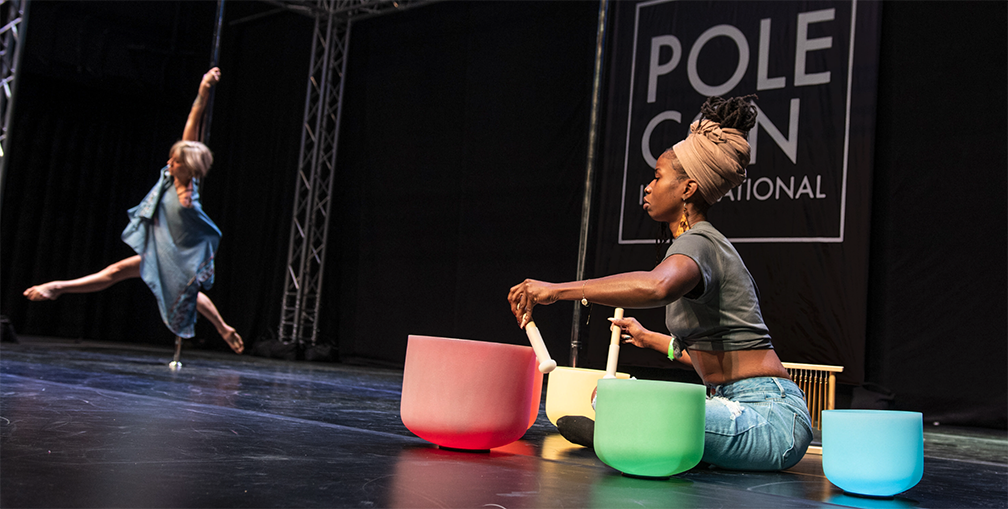Thank you to everyone who took our survey! We read every response. <3 *this is…

The importance of isometric movements in pole dance
What is an isometric movement?
Let’s look at a bicep curl. In a bicep curl, you are bending and straightening your elbow.
There are three types of muscle contractions that happen in the bicep curl:
- Concentric: the bicep muscle (on the inside of your arm) shortens under tension in a bicep curl
- Eccentric: the triceps muscle (on the outside of your arm) lengthens under tension in a bicep curl
- Isometric: a static tension when neither muscle involved in a bicep curl changes length, such as holding the arm at 90 degrees.
In pole, this bicep curl shows up in elbow grip. The action of moving your elbow into position involves concentric and eccentric muscle contractions. But once your elbow is on the pole, to maintain the tension of your elbow grip, you are executing an isometric contraction.
What is an isometric movement in pole?
Most pole poses involve isometric contractions. Any pose you hold for more than a “hot second” involves maintaining static tension across several muscle groups around several joint actions.
Pole movements where there is continual flow or dynamic movements generally will move through concentric and eccentric muscle contractions.
What are the benefits of isometric movements?
While isometric pole poses have not been studied extensively, isometric fitness and physical therapy exercises have been.
Isometric movements have been shown to be safer than dynamic movements, are easier for people who do not have a history of strength training to execute and can be done with little or no equipment other than body weight. Studies have also shown that isometric movements recruit more of your muscle fibers making them more effective at building strength. These types of movements can also help improve joint stability and may even decrease pain.
How do you train isometric movements off the pole?
Fortunately, you’ve got lots of options for training these movements off the pole!
Anything that you do to maintain a muscle contraction could be a beneficial isometric movement.
Planks (all types!), wall sits, glute bridges (holding not going up and down), holding a handstand are all ways you could start to work in more isometric training in your off the pole work.
You can also learn how to create tension within your own body and not “do” a specific exercise.
When we hold onto the pole, we immediately can create tension with the pole using our hands, our knees, ankles, etc. Challenge yourself by learning to feel the contraction in your body when you are holding on to something and then find it again when you are not.
Hold a plank (on your knees, hands, whichever works best for you) and feel what your muscles are doing. Then try to squeeze the same muscles without pressing into the floor, just when pressing into the air.
It’s hard! But over time you will develop the mind and body connection as well as the strength to use those muscles in your pole training.
For pole dancers, most poses are isometric contractions. As you progress in your pole pose journey, you typically start removing points of contact with the pole. This requires you to have more control over what the muscles in your body are doing. Finding that tension with the pole, the floor, or a weight and then try finding it without that assistance. Over time, this will help you create more stability in your body and help you achieve more and more pole moves.
Latest posts by Colleen (see all)
- PoleCon 2025 Updates from the Survey - June 20, 2025
- PoleCon Hub Page: MORE Black Voices - June 13, 2025
- PoleCon 2025: Recap - June 4, 2025


